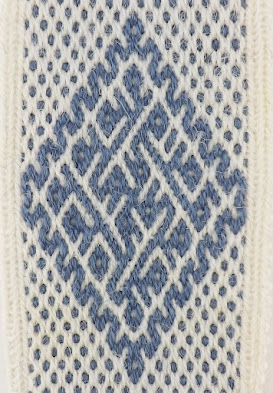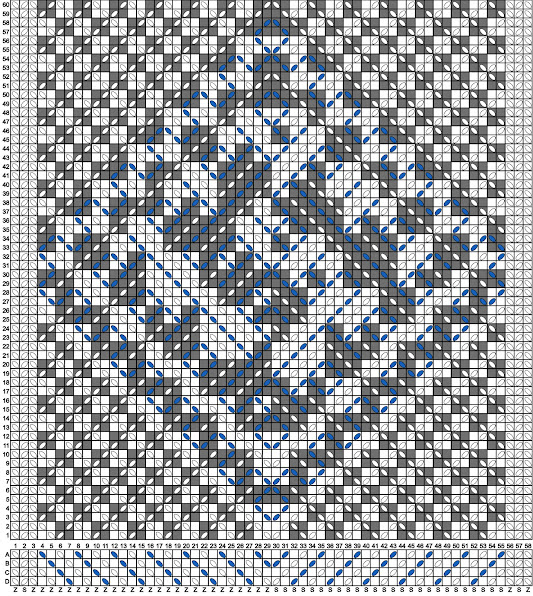Translate
Thursday, 1 June 2023
Uisce
Link to the Uisce draft TDD file
Wednesday, 22 March 2023
Ginkgo
Link to text version file for the Ginkgo draft
Link to the TDD file for the Ginkgo draft
Monday, 20 March 2023
Book Pricing Changes
Blurb (the company that print my books) have announced that they will be increasing the price of hard copy books on 29/03/2023 to help cover rising manufacturing costs. I don't know how much the increase will be or exactly when it will come into effect on the 29th, so if you want to take advantage of the current price, I would advise doing so by the 28th. This increase will only apply to hard cover and soft cover books. All eBook and pdf prices will remain the same.
To view the books and formats that are currently available for sale, follow this link to my Blurb profile page.
Friday, 3 February 2023
Phoenix
I recently shared a little of the design process for a new draft over on Instagram and asked if people thought the motif colours (green, blue and purple) would look better on a black or a white background. The answer was two thirds in favour of black and one third in favour of white, so I decided to weave a second version of the draft to show what it looks like in additional colours.
I've named the draft Phoenix as one sample is the colours we think of for the mythical phoenix and the other is the colour of the Phoenicians, the purple people. The small diamonds at the edges of the draft are from the narrow Oseberg band that I've referenced before. I really like how they weave up in a simple threaded-in band. The draft would be highly suitable for a beginner as, once the tablets are threaded, the turning sequence involves turning all the tablets forwards for each row. You will find that you get a build up of twist behind the tablets pretty quickly, so when I was weaving the samples, I switched my turning direction after 60 pattern repeats (240 rows) to weave out the twist.
Click on the links below to download the .tdd files and text versions for this draft:
TDD file for the purple Phoenix draft
Text version for the purple Phoenix draft
TDD file for the red Phoenix draft
Text version for the red Phoenix draft
As with all of the free drafts/patterns on this site, you are welcome to weave them, sell bands woven using them, and use them to teach other weavers, just as long as you state where you found them.
Thursday, 29 December 2022
Tablet Weaving Draft Designer Updates!
Monday, 21 November 2022
Fleurs-de-Lis
This draft is from one of the two bands I designed based on V&A 838-1894 for my book Tablet Weaving in Theory and Practice: Golden Diagonals. You can find a further eighteen drafts that that use the same threading diagram in the section on V&A 838-1894 in the book, as well as eighteen for its companion band. Golden Diagonals is an exploration of 11th century to 14th century gold brocaded bands (known as orphreys) from certain types of vestments. There a total of 15 bands in the book, based on 8 extant objects: the chasuble of St. Vitalis, the chasuble of St. Wolfgang, the chasuble of St. Heinrich, fragments of a chasuble orphrey cross, V&A 1256-1864, V&A 838-1894, the Hildesheim cope, and the orphrey of abbot John Dygon. I've translated many of the motifs into other tablet woven structures: warp-twining, simple double-face, warp-floats, threaded-in, Icelandic vacant-hole, and two-hole weaving, as well as including two bands in the brocade of the originals.
I wove the sample for this band (Band 11 of the book) in King Cole Merino Blend 4-ply wool yarn in the colours mustard yellow, white, and blackcurrant purple, with additional blackcurrant purple yarn as my weft.
This orphrey fragment is held by the Victoria & Albert Museum, UK, but is no longer associated with a specific vestment. Unfortunately, this is not unusual, due to the re-tailoring and conservation process that many vestments have been through and the practice of retaining the ornaments when the accompanying garment itself is beyond use. A second fragment (inventory number: MT 35053) of this band survives and is held by the Musée des Tissus, France. They have been dated to 1100-1299 by the V&A or, more specifically, the 13th century by the Musée des Tissus. It is believed that they were woven in Sicily, Italy[1], although the V&A identifies its fragment as German, which may be more of an indication of where it was used as an orphrey as part of a vestment.
The Musée des Tissus fragment is 113mm wide and 510mm long; the V&A fragment is a little longer, as the final quarter of the motif section at the bottom edge of the Musée des Tissus piece is cut off. The original orphrey was woven using 160 square tablets, threaded in all four holes with a fine 2-ply silk thread, now beige-coloured with hints of rose[1] and a rose silk main weft. The tablets were set up in an alternating threading and turned continuously together in the same direction. There is no evidence[2] that their turning direction was reversed during weaving, but this may not be representative of the original band as a whole.
The V&A fragment has 6 lozenges containing either 4 fleurs-de-lis or a spiralling motif, against either a green or beige background, decorated with angular vines with either flowers or buds. The background of each section is filled with small brocaded diamonds. Each motif section is 140mm long[2] and is formed by brocade threads in beige, green, brown, red, and purple silks, with spun gold and silver threads with cream silk cores, used doubled. The back of the band shows that the brocade threads were used economically, passing along the back when not needed. It would have been complex to weave, as multiple different colours of brocade weft were in use at a time and they each appear to have been wound on enough shuttles to allow them to be used only in localised areas, without them needing to pass across the space between motifs.
I adapted this band (Band 11 of Golden Diagonals) from the motifs on the V&A fragment of the orphrey, alongside it sister band (Band 10). They both have the same motifs, but for 67 tablets (Band 10) and 34 tablets (Band 11). The orphrey fragment has a total of three spiralling motifs, so I separated them into centres and frames, then recombined them to give a total of nine motifs. I then designed another three frames which give us another nine motifs, when combined with the centres. I had a lot of fun with these two bands, especially the part where I was translating the motifs for half as many pattern tablets.
You can download the TDD file for this draft by clicking here.
You can download the text version of this draft by clicking here.
References
[1] Spies, N. (2000). Ecclesiastical Pomp and Aristocratic Circumstance: A Thousand Years Of Brocaded Tabletwoven Bands, Arelate Studio.
Medieval Errors
This draft is from one of the two bands I designed based on the Hildesheim cope (held by the Victoria & Albert Museum, UK) for my book Tablet Weaving in Theory and Practice: Golden Diagonals. You can find a further six that use the same threading diagram in the section on the Hildesheim cope in the book. Golden Diagonals is an exploration of 11th century to 14th century gold brocaded bands (known as orphreys) from certain types of vestments. There a total of 15 bands in the book, based on 8 extant objects: the chasuble of St. Vitalis, the chasuble of St. Wolfgang, the chasuble of St. Heinrich, fragments of a chasuble orphrey cross, V&A 1256-1864, V&A 838-1894, the Hildesheim cope, and the orphrey of abbot John Dygon. I've translated many of the motifs into other tablet woven structures: warp-twining, simple double-face, warp-floats, threaded-in, Icelandic vacant-hole, and two-hole weaving, as well as including two bands in the brocade of the originals.
The Hildesheim cope (V&A inventory number: 17-1873), would have been worn by Christian priests during processions as a cape-like garment over other vestments. It is a masterpiece of German brick-stitch embroidery storytelling, depicting the martyring of 29 different saints in bright, colourful silks. Each of the saints and their tormentors are housed in a circle which overlaps its neighbours, forming curved-edged hexagons, and wear clothing decorated in geometric designs. While the congregation in early 14th-century Germany, where the cope was made, may not all have been literate, they would have recognised the symbolism in each of the hexagons and been able to identify each saint when they came into view as the priest moved and the folds of the garment shifted.
The two tablet woven orphreys on the cope hold pride of place, where they would have been most noticeable during use. It is believed that the bands (possibly from Köln, Germany[1]) are not original to the vestment and were added during later reshaping work. The band I describe as the "vertical orphrey" would have hung down the priest's spine, on the centre-back of the garment and the band I describe as the "horizontal orphrey" would have been worn as two vertical strips down the priest's front. The vertical orphrey is the wider of the two bands and is decorated with large lozenges framing a single repeated spiralling motif, brocaded alternately in blue and two other colours of silk (which are unfortunately now badly faded).
You can read more about the cope itself and its horizontal and vertical orphreys in Tablet Weaving in Theory and Practice: Golden Diagonals. The motifs of two smaller brocaded tablet woven bands that form the edgings of the vertical orphrey and the vestigial hood are described in my book Tablet Weaving in Theory and Practice: Vacant-Hole Pinwheels Revised Edition.
I adapted this band (Band 13 of Golden Diagonals) from the repeating motif on the vertical orphrey of the Hildesheim cope, with two additional motifs inspired by some of the weaving errors on the orphrey. Of the 11 motifs currently visible on the orphrey (there may be a 12th hidden behind the vestigial hood), 9 include at least one error, although their commonalities suggest that they were intended to be identical. Such errors are reasonably common in such bands, especially where the weave structure is complex and uses a large number of tablets, dissuading the weaver from undoing their work to make corrections[2][3].
You can download the TDD file for this draft by clicking here.
You can download the text version of this draft by clicking here.
References
[1] Epe, E. et al. (1991). Schatzkammer auf Zeit. Die Sammlungen des Bischofs Eduard Jakob Wedekin, 1769-1870, Diözesan-Museum Hildesheim. (pp. 168-9)
[2] Hansen, E. (1990). Tablet Weaving: History, Techniques, Colours, Patterns, Hovedland Publishers.
[3] Ræder Knudsen, L. (2004). Written Patterns in Early Tablet Weaving, In: Priceless Invention of Humanity: Textiles. North European Symposium for Archaeological Textiles VIII. (pp. 121-128)
As with all of the free patterns/drafts on this site, you are welcome to weave them, sell bands woven using them, and use them to teach other weavers, just as long as you state where you found them.
Sunday, 13 November 2022
Further Book News
We're close, we're very close!
Over the last few weeks, the book made it through copy-editing, ("You may keep 33% of the commas in this sentence" and other such mean things were said), the image samples came and I edited the rest of the photos, I finalised the text, and tidied up the reference list. Then, last night... LAST NIGHT... I uploaded the file to my publisher and set them going on the proof copies! I may be more than a little excited that it's almost time to share it with you. I'm expecting the proof copies on or before 25/11/2022, so expect the publishing date (provided that the proofs are ok) to be either late November or early December.
In the meantime, I'll be working on the two freebie drafts related to the book that I'm releasing here and videos about the book and each of the 16 bands featured in it.
Sunday, 30 October 2022
New Book Update
The new book is coming along and is almost finished! It's been through the copy editing stage (I have a few things to tidy up that got flagged and are still outstanding) and the publisher has the image samples to print, which should hopefully arrive by the end of the week. Once I have them back, I'll edit the remaining photos and get them in place in the book and upload it for printing! It's looking good for a final release date at the end of November. As usual it'll be available in hardcover, softcover and pdf. In the days leading up to release day I'll be adding two free drafts to the blog that tie in with the bands in the book.
I'm looking forward to seeing what people weave from it!
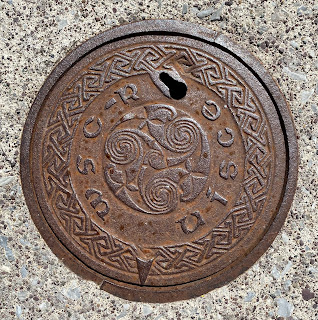
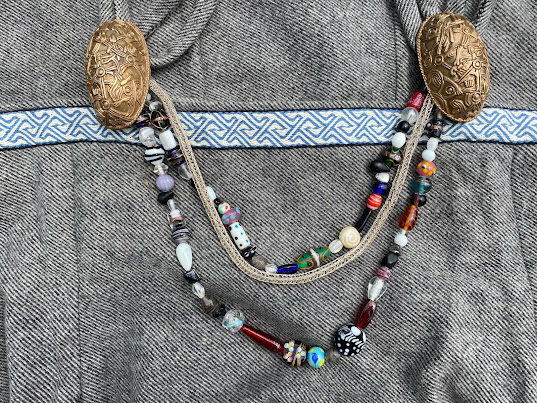


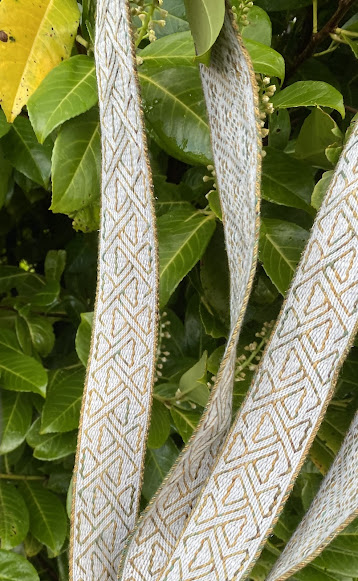
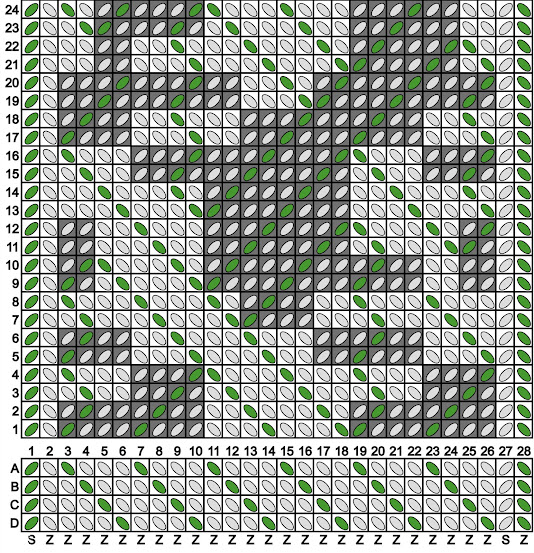


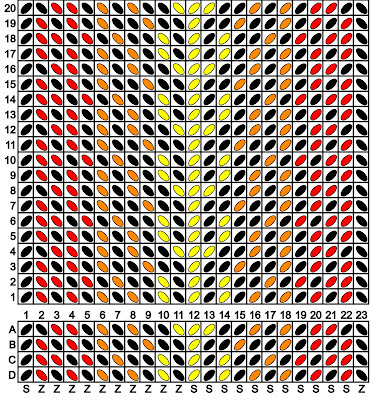


.jpg)
